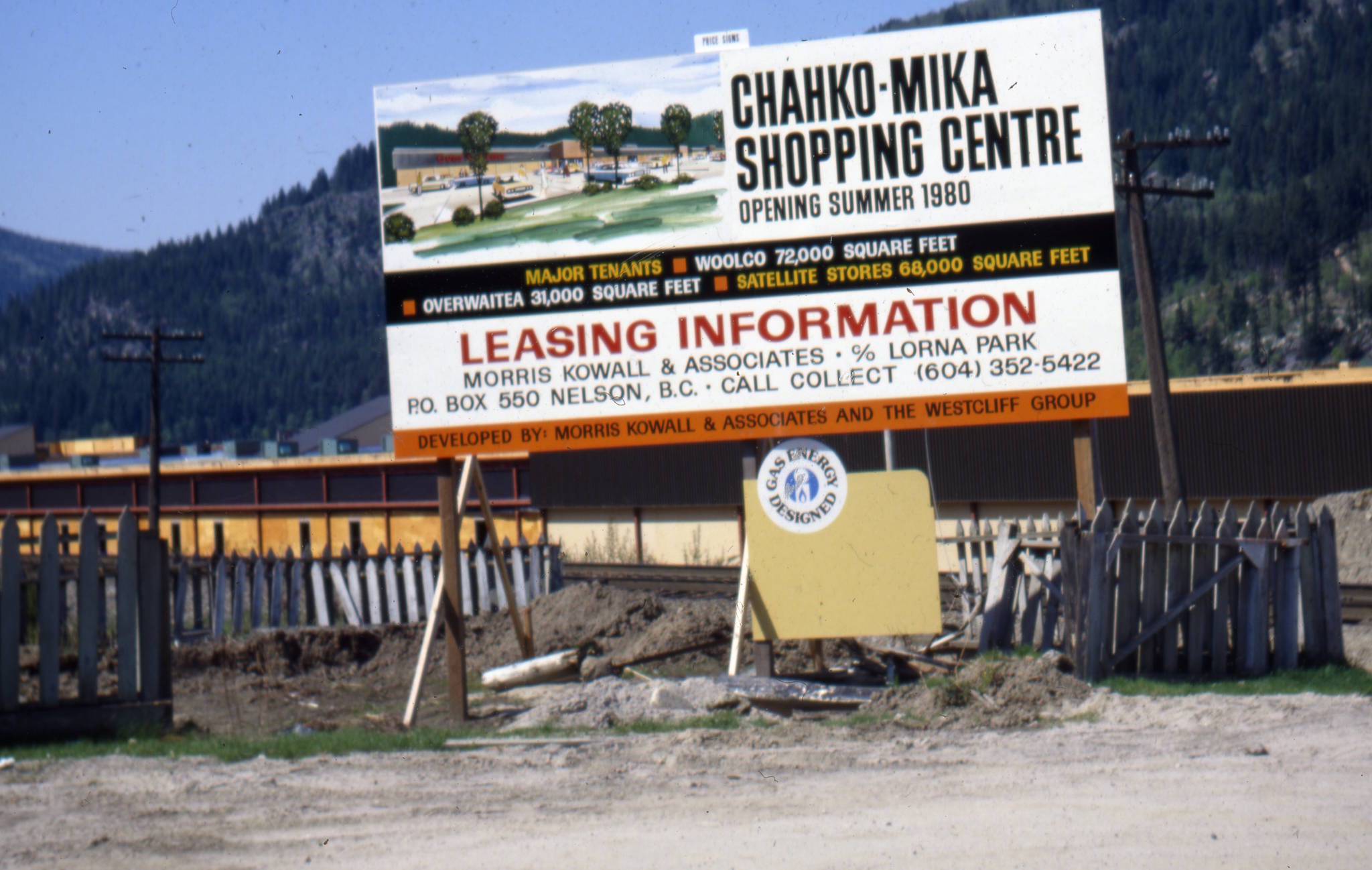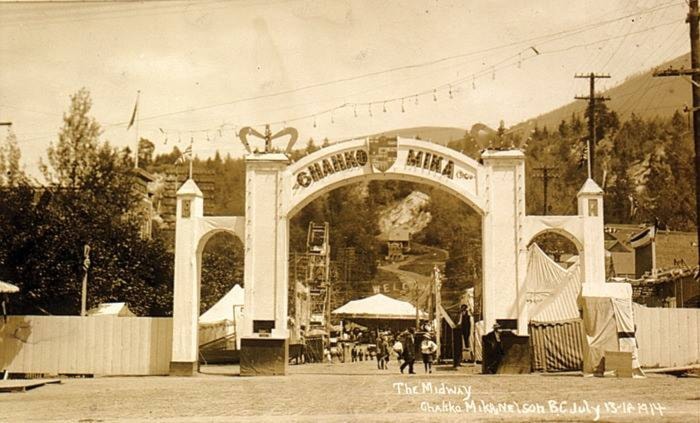Three hundred ninth in a series on West Kootenay/Boundary place names
Chinook jargon is a pidgin trade language used in BC, Washington, Oregon, and Alaska during the 19th century. It borrowed vocabulary from the Chinook language but also from English, French, and several other First Nations languages. Some of its words are still commonly used today, such as skookum, hooch, tyee, and potlatch.
In West Kootenay, several Chinook place names are still in use – for communities, mountains, creeks, lakes, and a shopping mall.
Three of these are associated with John C. Bell, mayor of Nelson in 1925 and a partner with A.G. Lambert in several local sawmills. We don’t know if he was actually responsible for choosing the names — he didn’t take credit for them, and nothing in his background suggests a knowledge of or fondness for Chinook jargon — but in each case, the names didn’t exist before he ambled along.
Bell pre-empted land at Sitkum Creek on April 29, 1895. Sitkum (also spelled Sitcum on early maps) means middle or half, and might reflect the creek’s position as approximately halfway along Kootenay Lake’s North Shore between Nelson and Balfour.
(Another Sitkum Creek exists on the upper Shuswap River. Sitkum Lake is at the head of Sitkum Creek just south of Monashee Provincial Park. There’s also a Sitkum Plateau south of the park.)
Bell and Lambert built a sawmill south of Winlaw in 1905 at a spot then known as Watson Siding. The following year, the CPR changed the siding’s name to Lebahdo, the Chinook word for shingle, which we can guess was one of the mill’s products.
(Although Lebahdo has the same pronunciation as the Doukhboor surname Lebedow, Lebahdo was already on the map before the Doukhobor migration to BC.)
In 1907, Lambert and Bell moved their operation to Sproule Creek, west of Nelson. The area, also called Williams Siding, became better known as Taghum, the Chinook word for six. However, six what has long been a mystery. Six miles from Nelson? Or six miles to the Kootenay River falls?
A mining claim called the Taghum, recorded for M.C. Monaghan, was described in the Nelson Daily Canadian of June 26, 1906 as “nine miles west of Nelson, about two miles north of Kootenay River.” But as a place name, Taghum doesn’t show up until June 1908.
• In 1947, Ken and Bobbi Chandler built the Tillicum Inn at Balfour. Tillicum has many meanings, all positive: friends, relations, tribe, nation, common people. The resort’s coffee shop was designed to look like a longhouse and its entrance was flanked by totem poles.
The Tillicum was later amalgamated with the neighbouring Rainbow Resort and is today the site of the Dock and Duck pub. You’ll also find Tillicum Mountain northeast of Burton and Tillicum Creek, which flows into the Pend d’Oreille River near Remac.
• In 1914, Nelson threw a giant week-long carnival that was the city’s equivalent of a World’s Fair.
A contest was held to choose the festival’s name. Kootenay Karnival and Carnagatta were considered but fortunately rejected in favor of Chahko Mika, which is the Chinook term for “you come,” or “come you.”
“The selection is felicitous, both in meaning and in its application to a season of merrymaking to be held in a fine little modern city that has risen in a region that once knew no other tongue in common than the Chinook jargon,” wrote the Spokane Spokesman Review.
Rex Cockle of Kaslo won $25 for the suggestion. However, he spelled it Chocko-Mika, and that’s how it first appeared in the Nelson Daily News of Nov. 7, 1913. This brought a letter to the editor from Nelson photographer Allan Lean who thought the name was “a very good one,” but he cited a Chinook jargon dictionary that said it should be spelled chah-ko.
“There are a number of men, especially in East Kootenay, whose Chinook was a common means of communication … who might ridicule the name as misspelt,” Lean wrote.
Organizers took notice and Chahko Mika it became.
Due to its grand scale and its timing — on the eve of World War I — the carnival was fondly remembered, even though it reportedly incurred a big deficit. It was not held again until the 1960s.
When Nelson’s lakefront shopping mall was built in 1979, another contest was held to come up with a name. Gladys White submitted Chahko Mika, based on a suggestion from her son-in-law Max Carne. Consequently, the mall’s name pays tribute to a key event in Nelson’s history.

